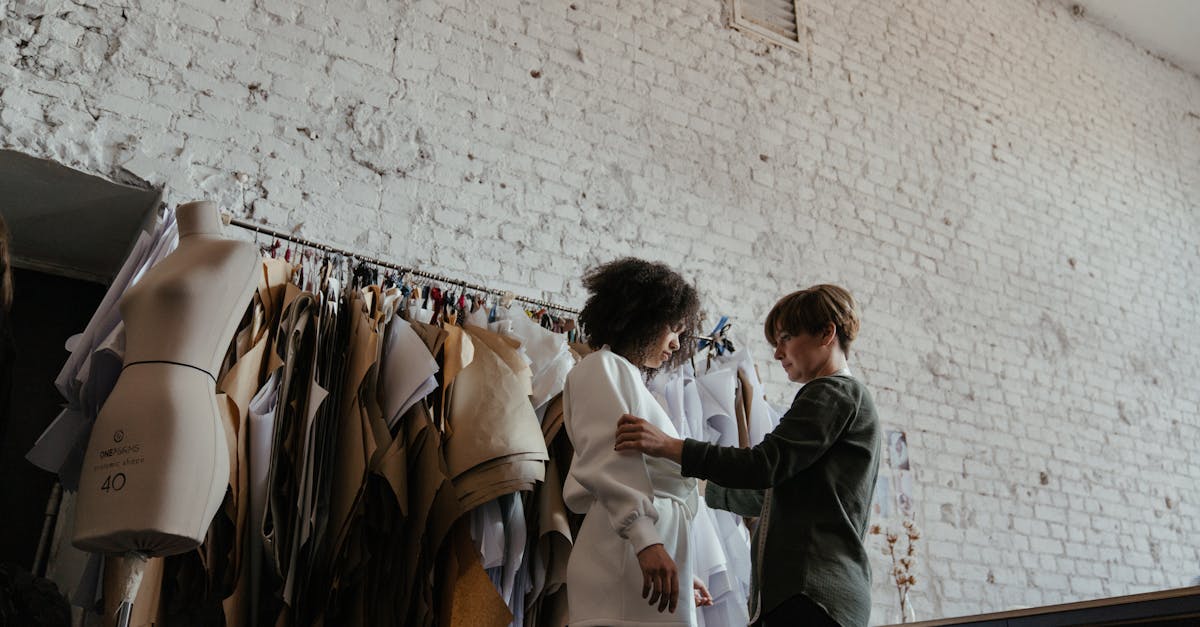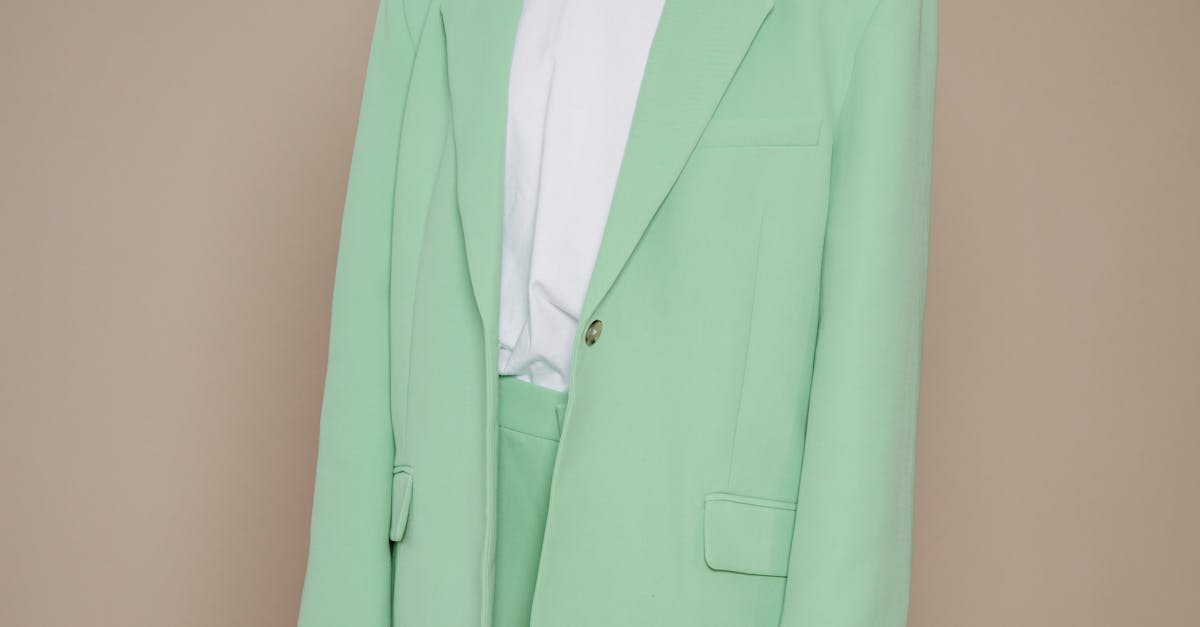
Table Of Contents
Considering Accessibility
When planning for fitted wardrobes, accessibility plays a vital role in ensuring functionality and convenience. Custom designs should account for the height and reach of all users, particularly if the wardrobes will be used by children or individuals of varying heights. It is important to consider how frequently items will be accessed. Items used daily should be placed within easy reach while less frequently used items can be stored higher or in less accessible areas.
The layout of a room must also allow for easy movement around the fitted wardrobes. Ensuring enough space for opening doors fully is essential. Users should be able to navigate their clothing and accessories without obstruction. Thoughtful positioning of lighting is important as well, enhancing visibility inside the wardrobe. A well-planned approach to accessibility sets the foundation for a user-friendly and efficient wardrobe design.
Ensuring Ease of Use
When installing fitted wardrobes, ensuring ease of use is paramount. The layout and configuration should cater to the daily routines of the users. Consideration should be given to the height of shelves, the depth of drawers, and the overall accessibility of items within the wardrobes. Arranging frequently used items at reachable heights can minimise unnecessary stretching or bending. This not only enhances convenience but also contributes to a more organised living space.
Another aspect to consider is the internal organisation of the fitted wardrobes. Incorporating well-designed storage solutions, like pull-out racks and modular shelves, can significantly improve accessibility. Smart options, such as sliding doors or lift-up mechanisms, help maximise space while ensuring that every area of the wardrobe is easy to access. Thoughtful planning in these elements allows the fitted wardrobes to accommodate different types of clothing and accessories, making everyday use straightforward and efficient.
Future-Proofing Your Design
When considering the installation of fitted wardrobes, it is important to think beyond your current needs and preferences. A design that looks great today may not serve you well in the future. This foresight involves selecting versatile materials and adjustable shelving systems that can evolve with changing requirements, ensuring that your investment remains functional and aesthetically pleasing over time.
As life circumstances change, so do our storage needs. Future-proofing your fitted wardrobes can include planning for additional space for future items such as seasonal clothes or expanding your collection of accessories. By incorporating flexible designs and modular components, you can create a wardrobe that adapts seamlessly to your lifestyle, protecting your investment and enhancing your home's value.
Adapting to Changing Needs
When designing fitted wardrobes, it's important to consider how your needs may change over time. This could include accommodating growing families, a shift in personal style, or evolving storage requirements. By selecting flexible designs that can adapt to these changes, you create a practical solution that can serve you well for years to come. Features such as adjustable shelving and modular components can enhance the versatility of your fitted wardrobes, ensuring that they remain functional as life circumstances evolve.
Planning for future alterations can save time and expense in the long run. Customising the wardrobe space with an eye on potential future uses allows for easy modifications without needing a complete overhaul. Think about how different lifestyles or hobbies could influence your storage needs. Whether it’s additional space for sports equipment or different hanging systems for varied clothing, incorporating adaptability into the design of fitted wardrobes will provide a thoughtful approach to personalisation and functionality.
Collaborating with Professionals
Working with professionals when installing fitted wardrobes can significantly enhance the outcome of your project. These experts bring a wealth of experience, enabling them to identify the best designs and materials suited for your space. They take the time to assess not only the aesthetics of your fitted wardrobes but also the practicality of the layout, ensuring that every inch is optimised for storage and accessibility.
The value of expert advice extends beyond just the installation phase. Professionals often provide insights into the latest trends, materials, and technologies that can future-proof your fitted wardrobes. Their knowledge can help you make informed decisions that will adapt to your changing needs over time. With their guidance, you can create a wardrobe that not only meets your current requirements but also evolves with your lifestyle.
The Value of Expert Advice
When embarking on the journey to install fitted wardrobes, seeking expert advice can significantly enhance the overall outcome. Professionals in the field bring invaluable insights based on years of experience. They understand the nuances of design, ensuring that the fitted wardrobes not only complement the space but also serve your practical needs. Engaging with specialists can help prevent common pitfalls associated with amateur installations, leading to a more efficient and aesthetically pleasing result.
Additionally, industry experts can offer tailored solutions that consider your specific requirements and preferences. They can guide you on the best materials, finishes, and configurations that align with your lifestyle. Working with professionals also paves the way for innovative ideas you might not have considered, elevating your fitted wardrobes from mere storage solutions to stylish focal points within your home.
FAQS
Why is planning important before installing fitted wardrobes?
Planning is crucial as it helps ensure that the wardrobes meet your specific needs, fit seamlessly into your space, and provide maximum functionality and accessibility.
How can I ensure my fitted wardrobes are accessible?
Consider the layout of the room and the height of the wardrobe. Ensure that frequently used items are easily reachable, and think about adding features like pull-down rails or shelves that can be adjusted to suit your needs.
What does future-proofing my wardrobe design mean?
Future-proofing involves designing your fitted wardrobes with potential changes in life circumstances in mind, such as growing families or shifts in storage needs, so that they remain functional and stylish for years to come.
How can I adapt my wardrobe design to changing needs?
Choose modular components that can be reconfigured or added to in the future. Incorporating adjustable shelving and versatile storage solutions can help accommodate a variety of items as your needs evolve.
Why should I collaborate with professionals when installing fitted wardrobes?
Professionals bring expertise and experience, which can help you avoid common pitfalls, ensure proper measurements, and optimise your design for both aesthetics and functionality. Their advice can be invaluable in creating a wardrobe that perfectly suits your space and lifestyle.
